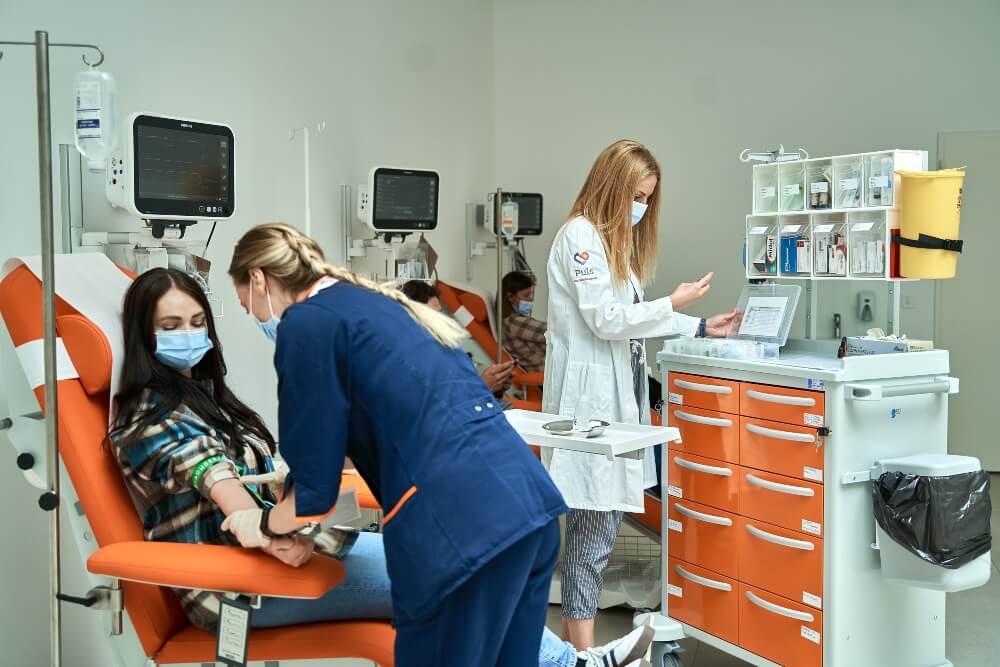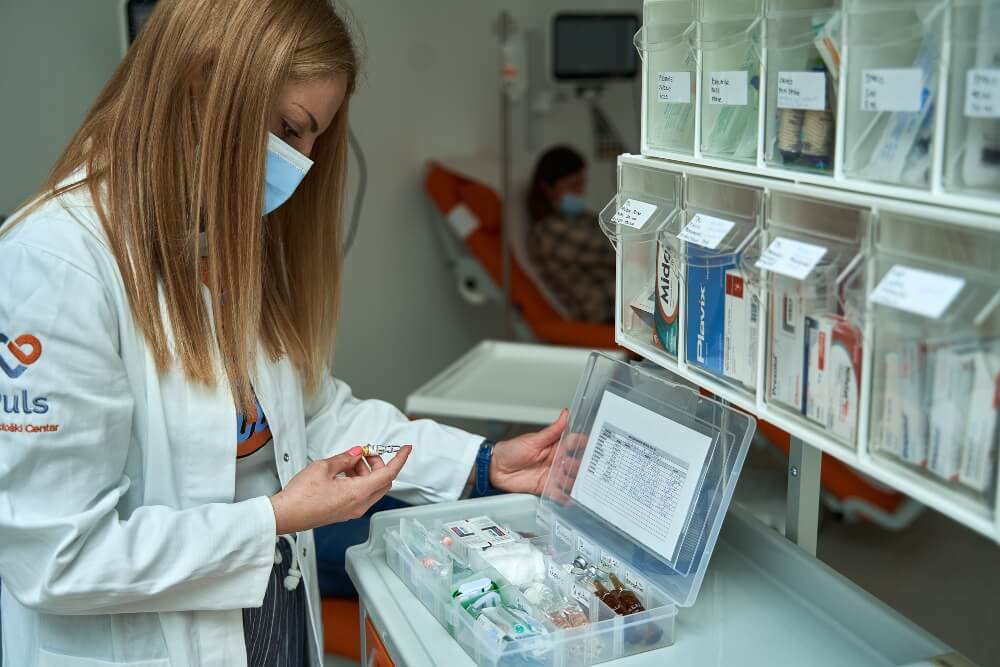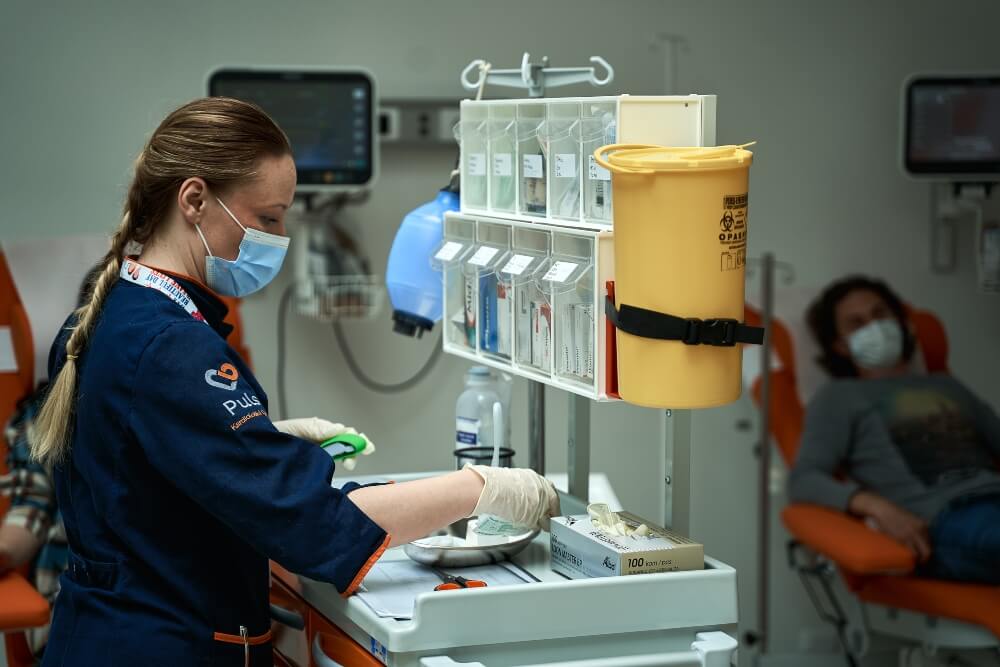The term “hemoglobin” originates from two Greek words, “heme” and “globin,” which actually refer to its complex chemical structure. What is interesting is that hemoglobin can exist in more than one form in the human body, reflecting the incredible complexity of biochemical processes and the body as a whole.
What is hemoglobin and what is its function?
Hemoglobin is an organic biogenic substance that, based on its chemical structure, belongs to the group of proteins.
In the human body, the hemoglobin molecule consists of two parts: the protein component (globulin) and the non-protein component (heme). The globular part is composed of four protein chains, each of which is connected to the central non-protein part of the molecule that also contains an iron atom (Fe⁺). The main site of hemoglobin action in the body is the blood, and since it is an integral part of red blood cells (erythrocytes), it is one of the most important metalloproteins (due to its iron content) and blood pigments.
Hemoglobin in the blood primarily serves for the transport of oxygen (O2), but it is also important for the transport of carbon dioxide (CO2) and hydrogen ions (H⁺).
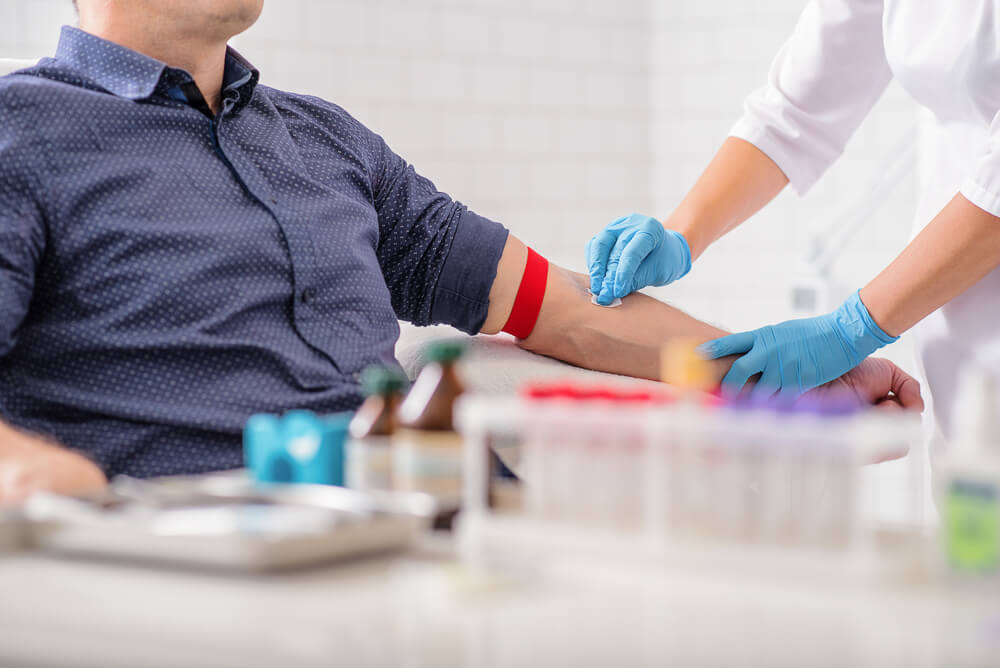
What are the normal values of hemoglobin?
Physiological (normal) values of hemoglobin differ depending on gender and age, so there is a specific reference range for each target group:
- Men: 140-180 g/l
- Women: 120-160 g/l
- Children: 110-160 g/l
- Pregnant women: 110-120 g/l
What is generally accepted in terms of physiological values for the general population are the reference values of hemoglobin within the range of 120-180 g/l. From a medical perspective, if the total hemoglobin falls below a specific value regardless of changes in the red blood cell count, anemia will occur, which always represents a pathological condition or disease.
Anemia can be further categorized into various groups depending on the type of causative factor that triggers it. In anemia, in addition to finding a decreased hemoglobin level in the blood, we also find an increased mean corpuscular hemoglobin concentration (MCHC), which can provide more information about the type of anemia. However, an elevated MCHC in the blood is most commonly associated with the diagnosis of macrocytic anemia (spherocytosis), which occurs due to insufficient intake or malabsorption of vitamin B12 and folate.
Contrary to anemia, which is characterized by a decrease in hemoglobin levels and always represents a pathological process, an increase in hemoglobin levels itself does not indicate a disease but rather serves as a symptom that suggests the occurrence of a potentially pathological process and the possible development of a disease.
The hemoglobin value in the blood is an important health parameter and an indicator of overall health, so it should be regularly monitored. This can be easily achieved through laboratory tests, which are provided by Pulse Cardiology Center along with available cardiological and laboratory services.
Elevated Hemoglobin – Why does it happen?
The value of hemoglobin can be elevated as a result of other normal processes and conditions in the body, or the elevation of values can occur as a consequence of certain pathological conditions, such as certain cardiovascular (heart) and respiratory (lung) diseases. Just as physiological hemoglobin values vary depending on gender and age, we also differentiate between elevated hemoglobin values in adults and children.
If the hemoglobin value is higher than 175 g/L in men or 155 g/L in women, it is considered a condition of elevated hemoglobin in the blood. The causes and conditions that lead to an increase in hemoglobin values in the blood are numerous and depend on various factors.
Among the most common causes of elevated hemoglobin in adults are:
- certain genetic mutations
- high altitude living
- dehydration
- certain cardiovascular (heart) diseases
- certain lung diseases (COPD – chronic obstructive pulmonary disease)
- certain congenital heart diseases
- prolonged smoking
- excessive and prolonged alcohol consumption
- increased synthesis of erythropoietin in the kidney
- use of certain medications that stimulate red blood cell production
- bone marrow disorders
- malignant liver tumor (cancer)
- malignant kidney tumor (cancer)
- development of lung emphysema
- use of EPO doping agents in sports
- specific seasons (winter)
- digestive disorders (intestinal obstruction)
- type II diabetes (diabetes mellitus)
Just as hemoglobin levels can vary in adults, elevated hemoglobin can also occur in childhood, although the causes leading to increased concentration may be slightly different.
The most common causes of elevated hemoglobin levels in children are:
- overdue delivery, i.e., birth after the 42nd week of pregnancy
- certain chromosomal anomalies (Down syndrome, trisomy of the 13th and 18th pairs of chromosomes)
- low birth weight of the newborn
- mother with type II diabetes mellitus (diabetes)
Symptoms of elevated hemoglobin in the blood
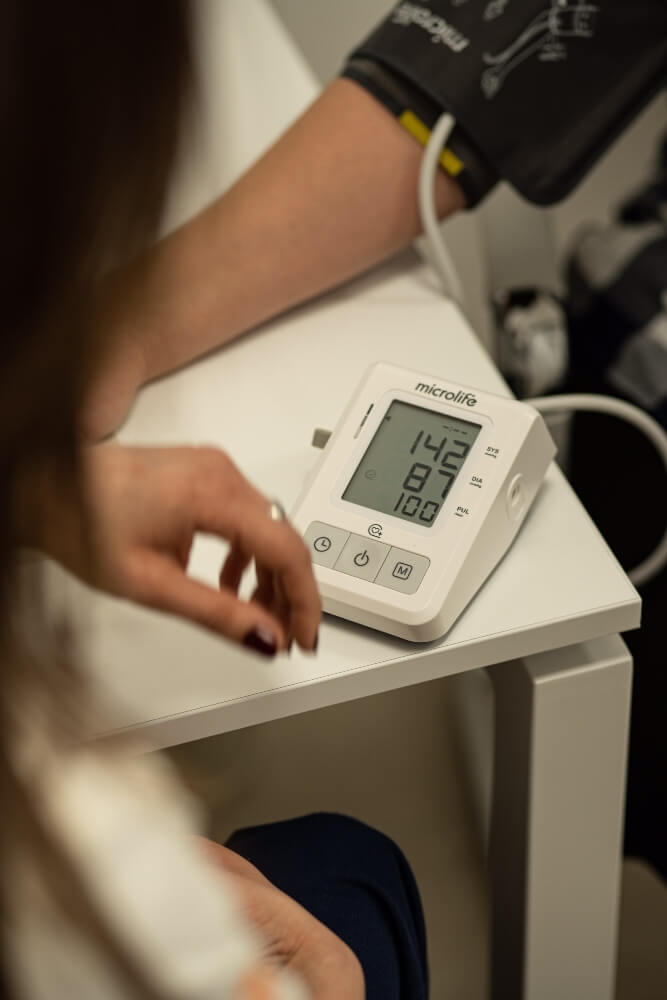
The symptoms that may manifest depend on various factors such as gender, age, overall health condition, and others.
Some of the symptoms of elevated hemoglobin levels in adults include:
- Lack of concentration
- General weakness
- Dizziness and confusion
- Decreased or loss of appetite
- High blood pressure
- Slowed and impaired circulation
- Swelling or edema
- Itchy skin
- Bluish discoloration of the skin (usually most noticeable on the lips and fingertips)
- Joint and bone pain
- Numbness or tingling sensation
- Sleep disturbances may also occur
It is important to note that elevated hemoglobin levels often indicate an underlying medical condition when other environmental factors have been ruled out. If you notice any of the above-mentioned symptoms, it is advisable to consult a doctor who will further evaluate you based on examination and medical history.
Some of the symptoms of elevated hemoglobin levels in children include:
- Reddish discoloration of the skin
- Jaundice
- Hypoglycemia (low blood sugar levels)
- Respiratory problems
- Decreased appetite
- Lethargy (lack of energy for normal daily functioning)
How to lower hemoglobin levels in the blood?
Reducing high hemoglobin levels can be achieved primarily through dietary changes, natural therapies, and the use of certain medications.
Regarding natural methods to lower hemoglobin levels, it is important to first adjust the diet by increasing the volume and frequency of fluid intake, particularly water, teas, natural juices, and soups.
In terms of dietary changes, transitioning to a dietary-hygienic regimen or some form of vegan diet that involves reducing the intake of proteins involved in hemoglobin synthesis would be beneficial. It is also advisable to decrease or avoid foods that contain iron and vitamin B9.
Furthermore, for the best effects, it is desirable to avoid consuming alcohol and cigarettes.
Some of the foods that should be included in the diet are:
- whole grain cereals
- soy (as a meat substitute)
- legumes
- nuts
- fish and seafood
- fruits and berries
- tofu
- fermented dairy products (kefir, sour cream, cheese)
- leafy green vegetables
- chicken breast
In addition to a modified and adapted diet, some alternative/traditional natural therapy modalities can be used to lower elevated hemoglobin levels, such as:
- hirudotherapy (the use of leeches for medical purposes)
- cupping therapy (which helps remove accumulated toxins from the body using special cups)
- mumie or mountain balm
- blood donation (not recommended for certain medical conditions)
For the physiological functioning of the body, complete synergy of all organ systems and biochemical processes is necessary. Therefore, if hemoglobin levels are optimal, other systems such as the cardiovascular, respiratory, and muscular systems will function normally.
From the reasons mentioned above, we can see that hemoglobin is an extremely important component of cellular metabolism, and it is crucial to control hemoglobin levels. Fluctuations in hemoglobin can indicate numerous processes occurring in our bodies, which are of great importance in the prevention, recovery, or treatment of potential pathological changes. If these changes are not detected in a timely manner, they can lead to the development of various diseases.
In our institution, all necessary laboratory analyses are available, including hemoglobin analysis. Schedule an appointment with us using the contact form on our website or by calling us.

